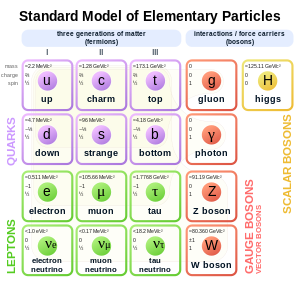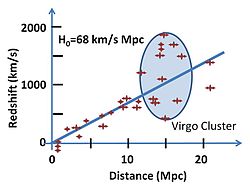 |
| Golden and red leaves decorate the once boring green tree. |
Some interesting stuff off the beaten track. It could be physical, mental or mathematical.
Tuesday, October 18, 2011
Autumn is here
Sunday, October 16, 2011
London
 |
| In Trafalgar square |
It was on a Saturday and a perfect sunny day as I remember it. My mom and I took the train and then the London underground to explore London. It was also the day after the Royal Wedding of Prince William and Miss Catherine Middleton.
We didn't have a plan beyond just deciding to walk along the Thames river. All the sights are near the riverside, like the Big Ben, London eye, Shakespeares Globe theater and of course the London bridge. I think we also went to check out Harrods, and the British Museum of Natural history. I think the museum rocks...ha ha. Too bad my mom thinks otherwise.
 |
| London Bridge station is not near the |
 |
| Big Ben |
 |
| Shakespeare's Globe Theatre |
 |
| The |
 |
| At the Museum of Natural history. My mom got really bored here. |
 |
| I don't remember where this is, a random street in London or Windsor? |
Tags:
united kingdom
Location:
Westminster, London, UK
Tuesday, October 11, 2011
Trying to understand it all: The Standard Model Part 1
 |
| Source: PBS NOVA, Fermilab, PDG |
Anyway, you may also have realized that there are three 'kinds' of 'stuff' represented by the different colours: purple, green and red. All the matter we can see, feel and detect so far (observable) are made from the 'elements' in the diagram. The ones in the purple box, physicists call them quarks, green ones leptons and red ones exchange particles. For example the proton, which makes up part of an atom's nucleus is made from two u-quarks and one d-quark. The neutron, is made up of one up-quark and two down-quarks instead. Then we also have electrons that usually orbit around the nucleus of the atom. Electrons belong to the lepton (green) group.
Now, we have only talked about baryons (subatomic particles that consists of three quarks or antiquarks). In 1935, Hideki Yukawa theorized the existence of the mesons as exchange particles for the strong nuclear force. This idea was proven to be not true as the real exchange (or carrier) particle for the strong nuclear force is the gluon. The first mesons (made from only two quarks or antiquarks), the pions (made from an u-quark and d-antiquark) was found in 1947 by Cecil Powell, César Lattes, Giuseppe Occhialini et.al. from cosmic rays. Subsequent experiments detected charged pions and the neutral pion.
The strong nuclear force is mediated by the gluon between quarks and antiquarks in the proton, neutron for example. They bind the quarks together so hard we never get to see any 'naked' quarks in nature. Everytime you pull the quarks apart and when you think you put in enough energy to split them, they convert that energy into a quark-antiquark pair and you get two mesons or baryons.
 |
| Pulling on the quark pairs in mesons create even more mesons, resulting in a mess (jet) of particles. Source: Wikipedia |
Tags:
particle physics,
standard model
Location:
Lund Municipality, Sweden
Friday, October 07, 2011
The accelerating universe
 |
| Cepheid stars, maybe not the ones that Hubble used. Courtesy of Cepheid stars from galaxy, Zwicky 18 (Hubble telescope image) |
The story started with Albert Einstein and Edwin Hubble. Einstein has just published his Theory of General Relativity (1916). What follows is Einstein's self-proclaimed 'biggest blunder'. He believed that the universe was static(fixed size) so he added a cosmological constant, Λ into his field equation of the universe since his original equation showed that the universe was expanding. There was no observational evidence for expansion at that time.
... and Hubble finished measuring the speed of Cepheid stars moving away from our galaxy, the Milky Way a few years later. This means that our universe is slowing expanding. This means that there was no need of a Λ term.
 |
| Einstein's field equation |
Hubble changed the way we look at the universe. He found other galaxies besides our own (1922). More importantly, from his observations, he found out that the universe was expanding at a constant rate (1929). There was a beginning to the universe which we now call the Big Bang. To the right is Hubble's plots of the the speed of stars moving away from us. You can see that the further the star from us, the faster it moves away from us.
 |
| Fit of redshift velocities to Hubble's law; patterned after William C. Keel (2007). The Road to Galaxy Formation. Berlin: Springer published in association with Praxis Pub., Chichester, UK. |
Later in the 1990s, two research groups (High-z Supernova and Supernova Cosmology) looking at supernovae (Type 1a) found out that the universe not only expanded at a constant rate, but actually accelerated.
It was generally assumed that the expansion rate would slow over time as gravity pulled the universe back together. The two groups above that used supernovae to study more were astonished when they added their new data points to the Hubble diagram. The universe not only did not slow down expanding but actually expanded even faster. In the plot below, if the universe were expanding at a constant rate, all the points in the lower plot would lie in a straight horizontal line at zero. Instead, the supernovae with higher velocities lie above the line.
 |
| This was the first evidence that the universe is expanding at an accelerated rate, driven by something we choose to call "dark energy". Courtesy of the High-Z Supernova Search Team |
Tags:
cosmology,
nobel prize,
universe
Location:
Copenhagen, Denmark
Saturday, October 01, 2011
From the past: Phuket
 |
| The sun, the sea, the umbrellas. |
Phuket. Who isn't familiar with this beautiful island off the west coast of Thailand? Plenty of tourist from all over the world travel to this island to holiday. Many of them from the cold northern European countries but also many from the neighbouring south-east asian nations. I have been informed by many of my Swedish friends that those with lots of money go holidaying in Thailand and those with less go to Greece. I definitely agree, when the winters in Sweden or Scandinavia in general are cold and depressing. You get only about 6 hours of daylight or less in the middle of winter.
Sure, for short term visitors like me, winter sounds like fun. The snow, the white christmas experience. It is a hassle to need to always check the weather or outdoor temperature when you are going out so that you do not under-dress. Winter needs some getting used to. Ok, anyway, Phuket was devastated in Dec 2006 when it got struck by a powerful tsunami originating from the Indian ocean. Ever since then, they have reconstructed everything and when I was there, you would not even know that the area was totally destroyed by the massive tidal waves.
Phuket seems lovely. Nice beaches, good food, friendly locals. Rows of shophouse line the beaches, with the more expensive shops closer to the beach and the ones that the local frequent, far inland.
Sure, for short term visitors like me, winter sounds like fun. The snow, the white christmas experience. It is a hassle to need to always check the weather or outdoor temperature when you are going out so that you do not under-dress. Winter needs some getting used to. Ok, anyway, Phuket was devastated in Dec 2006 when it got struck by a powerful tsunami originating from the Indian ocean. Ever since then, they have reconstructed everything and when I was there, you would not even know that the area was totally destroyed by the massive tidal waves.
 |
| Welcome to the red light district. |
 |
| Rock and roll. |
 |
| Selling smoke cuttle fish, I think. |
 |
More pictures of the beach. |
 |
| Before |
 |
| After |
 |
| Suprisingly you get Dimsum here. |
 |
| Proof I was there. Haha |
 |
| Thai elephants :) |
Location:
Phuket, Thailand
What's next: After Tevatron
On October 13, 1985 at Fermilab, the Tevatron produced protons and antiprotons collisions inside the CDF detector for the very first time. It was a magical day for the few dozen people in the accelerator and CDF control rooms. Since that day, literally billions of matter-antimatter collisions took place inside CDF and then inside CDF and DZero. What was once novel is now routine – and routine at an unprecedented scale. The intensity of the beams gradually multiplied, thanks to the relentless efforts of the Tevatron accelerator physicists.Friday at 2 p.m., after nearly 26 years of operation, a switch will be turned, ending the career of one of the most remarkably successful colliders ever in particle physics. The Tevatron collider established a brand identity for Fermilab and changed the physics landscape forever...- Rob Roser and Giovanni Punzi, Fermilab
Tevatron. Courtesy: Fermilab
|
The Tevatron has it share of important particle physics discoveries. It has been said that the accelerator has done its job well. It accomplished what it was built for. However, physicists were a bit disappointed since they could not get a whiff of new physics from the Tevatron, or at least find the Higgs boson.
The Tevatron hosted two detectors, CDF and D0. Both the CDF and D0 detector takes snapshots of the particles that emerge when protons and antiprotons collide. This collision produces a gezillion amount of particles that physicists will have to sieve through and find the ones that we have never seen before. The Tevatron discovered
- the top quark and determined its mass to a high precision
- two distinct production mechanisms for the top quark: pair and single production
- five B baryons (2 cascade, 1 omega and 2 sigma _b)
- Bc meson
- Y(4140), a new quark structure
- Bs oscillation
source: Fermilab
So now, it is up to the LHC@Cern to find the Higgs boson, or something to replace it. For the near future, the data generated by the Tevatron will be analyzed by physicists. A new accelerator research center will also be built at the CDF site. For those interested to watch the closing ceremony, here is the link. The show starts at 2pm GMT-5.
Note: Top quarks are very massive, as heavy as a Gold atom. It requires large amounts of energy are needed to create one and the only way to achieve such high energies is through high energy collisions. These occur naturally in the Earth's upper atmosphere as cosmic rays collide with particles in the air, or can be created in a particle accelerator. As of 2011, the only operational accelerators that generate beams of sufficient energy to produce top quarks are the Tevatron at Fermilab, in which protons and antiprotons are collided and the Large Hadron Collider at CERN.
Subscribe to:
Posts (Atom)







